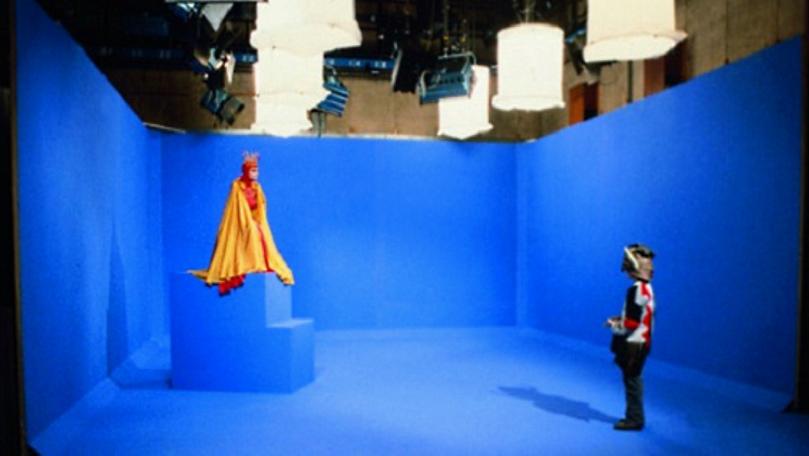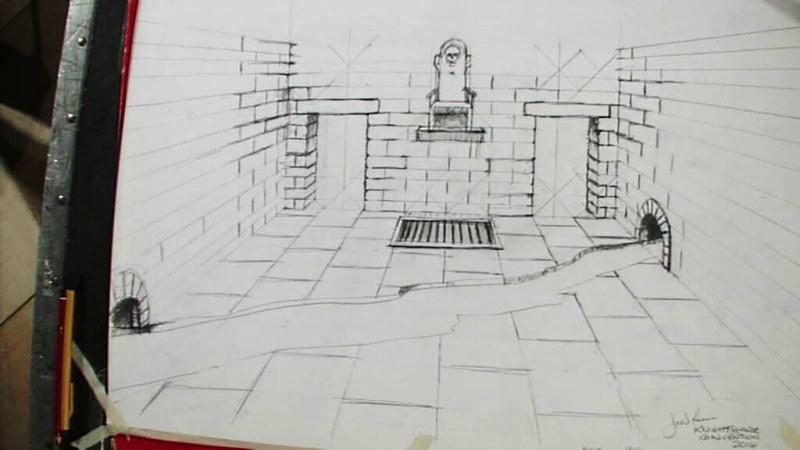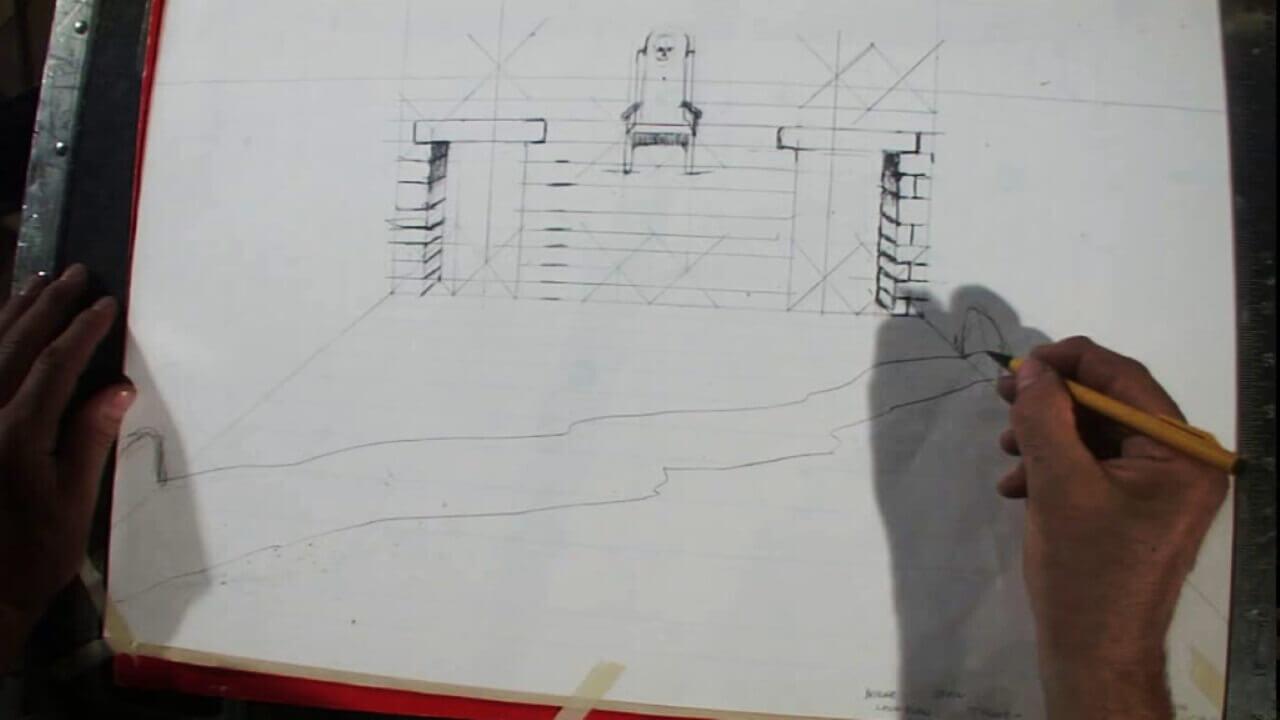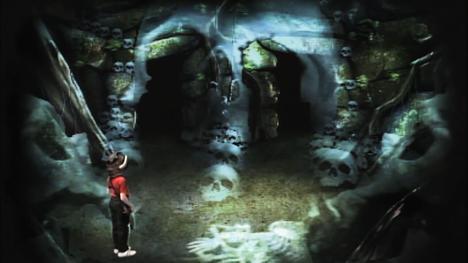During this design masterclass, Knightmare artist David Rowe live-sketched a dungeon room while creator Tim Child explained the technical side of the graphics.
David began by outlining the process of designing artwork for the show. He demonstrated the grid by Jean Peyre, which was used to build rooms to the right perspective.
He would then fax drafts to the Knightmare offices for feedback and corrections before starting the final artwork.
Several of his retained drafts have notes and instructions in the margins. Sometimes Tim Child would add further sketching to explain his thinking.
Art directors always know what they don't want when you show it to them.
The convention guests chose the features of a dungeon room for Rowe to sketch live during the session.
They opted for a throne room with the chair offset high into the chamber. A lava stream would present a hazard for the dungeoneer.
We saw the covers of the early computer games - images that were so good, they had to put a disclaimer on them... I wanted to know who was doing this.
The technical artistry
While Rowe got to work, Tim Child spoke about the technological side of Knightmare and why chromakey was a risk in the 1980s.
"It was only really being done to any great effect in Hollywood," he said. "In television, people were very shy of it because it led to all kinds of problems and to very slow production."
"Our problem was that we were trying to dramatize an adventure game almost on the fly."
The real breakthrough for Knightmare was an invention called Ultimatte by Californian effects pioneer Petro Vlahos.
This could overlay multiple shades of saturated blue, which created new possibilities for blue screen technologies.
"For the first time ever, we were able to cast shadows in real time of people walking into dungeon scenes that were actually just illustrated drawings," Tim explained.
"That's what made Knightmare completely different from anything else that was being tried outside the realms of pure drama and film."
Because we were doing such a difficult thing, when it worked and we got away with it, you got such a huge rise.

The computer game artist
Since computers at the time lacked the power to handle animation, Knightmare needed atmospheric static backdrops for its dungeon environment.
Tim had been drawn to the luxurious fantasy artwork from computer game covers, which was far more opulent than the in-game graphics itself.
Knightmare would be an opportunity to reproduce that artwork more faithfully than games developers could.
Tim contacted the games publishing companies to track down his man, David Rowe.
"His work fitted the bill exactly," he said. "I went after him and I wasn't going to take no for an answer."
Rowe's work established the production design values for Knightmare, Child explained.
"If we did things a different way or we did things that used new technology, we still tried wherever possible to remain true to that look and feel that David gave us."
Troubleshooting
Knightmare posed several self-defeating production challenges for its creator.
One was how to keep variety without slowing down production. For this, the Peyre grid was vital as it allowed the production team to use any artwork that matched it.
"Knightmare scenes look very different but the underlying geometry behind them is that hidden grid," Tim explained. "We knew we could go from room to room to room.
"As they were going to share the same floor, that geometry was key to the whole process."
Another issue was lighting. To make the chromakey work at its best required powerful lighting, which often meant the subjects on set were illuminated too brightly for the dark dungeon chambers.
Ultimatte again came to the rescue, as it allowed the luminance for the foreground and background to be controlled separately.
"We could walk a dungeoneer in, turn him up as he walked into a lit area and turn him down again as he walked into shadow," Tim explained.
The reveal
By the end of the session, David had completed the rough sketch of the dungeon room.

Tim explained the corrections he would have requested due to the technical constraints he had described during the session. In this case, it was a lighting issue.
Lava would create a light source from the floor, which would make it difficult to keep the luminance realistic. Instead, a darker sludge or ooze would solve that problem while keeping the same element of challenge.
This gave audience members a more complete sense of the production process when it came to the design and delivery of a complete dungeon room.
A few years later, we made a series with David Rowe about the stories and technical details behind some of his classic rooms.



